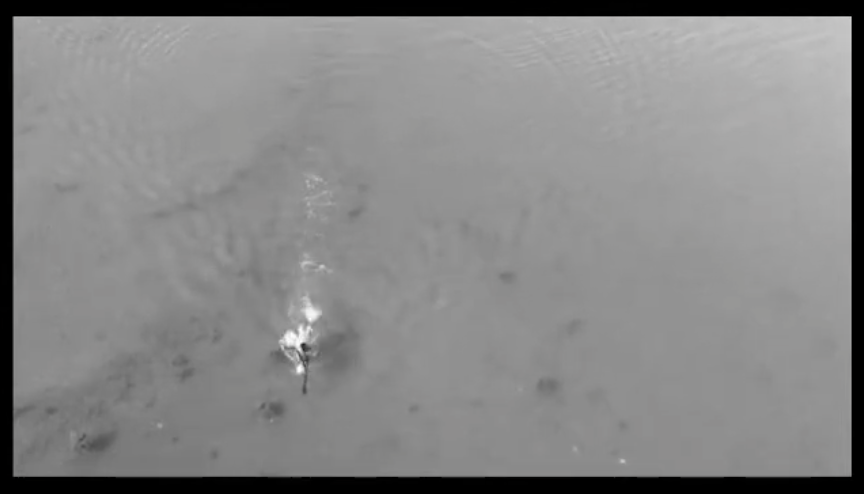Jacq Garcia on Carali McCall
I MISS THE LAND BUT DOES THE LAND MISS ME?
A Performance Lecture by Carali McCall
’I miss the land, but does the land miss me?’ was lecture all about place, longing, stillness, and endurance.
The lecture opened with a land acknowledgment from Fereshteh Toosi transcribed below:
“transmitting from Council of three fires Odawa, Ojibwe, Potawatomi Nations also known as Chicago, Illinois there was also an acknowledgment of immigrants, migrants, black and brown ancestors as well as the extractive and colonial infrastructure of digital computations which uses electronics and servers all of which are made possible by occupying places where other beings live currently or once lived.”
I also want to take a moment to acknowledge the places I inhabit. When I watched the lecture I was in Athens, Ohio, the land stewarded by Kaskaskia, Osage, Shawnee, and Ofo peoples. I’m from Houston, Texas, a land stewarded by Karankawa, Coahuiltecan, Atakapa, and Sana peoples. Where I’m currently writing from is Cortez, Honduras, a land that was stewarded by Maya and Lenca peoples.
Carali is from a farm and rural town in Canada who currently lives and works in the UK. The landscape she grew up in has influenced her work and how she interacts with other lands she resides in. She finds herself interacting with the lands physically- whether it be shoulder sculptures (taking a cast of rock or land and carrying it on the shoulders for a duration), walking in a line (drawing) through a landscape, resistance on the land (by resistance bands on a rock), or swimming through (drawing) through a cold body of water. The physicality of these interactions are a manifestation of the yearning to get back to the land.
Throughout the lecture, there was a discussion on the fluidity of performance art- it can be drawing, sculpture, action, repetition, sound. All of these elements can be within their own disciplines as well as exist within a performance context. The concept of a drawing as performance, line as drawing, and line as performance.
I have remained thinking about how far you can push the boundaries on individual disciplines and how that can help further develop a work. The slipping from discipline to discipline provides a much richer work to dive into and gives me much to chew on as I think about my own personal work.
Another concept that was brought up is- if drawing is movement, then what about the stillness? Is there drawing in stillness? The still drawing- a longing for home and longing for landscape. The drawing of stillness manifested through holding the landscape, feeling the weight of a rock through a duration. These moments of stillness can serve as contemplation as well as a different manifestation of yearning for the land in which we have inhabited and how we can develop a relationship towards landscape.
Live Zoom Performance:
Two screens side by side, Carali live and a video at the same time.
Carali, illuminated, holds a rock. The other screen starts in darkness- you can only hear breathing, sounds of performance drawing, and what sounds like the water.
“Swimming is a life skill” appears in the video.
A video starts playing showing Carali getting ready to swim- black and white colors.
As the video starts, the lights turn off on the live performance- you can vaguely make out the sillohuette of Carali still holding the rock.
Just when Carali is about to enter the water. the video darkens and only the sound of breathing is heard.
The video resumes and you see the shot of the water as beautiful music (cello) begins to play.
Carali is then shown swimming through the water in a shot from above. The perspective shifts and now shows her swimming towards you.
Black screen. You hear water, breathing, and performance drawing sound. Carali in darkness still holding the same rock.
Sound dims, performance ends.8 minutes total.
As time has passed, I have contemplated a lot on my relationship to the places where I live and what connections I have to the land I have previously been. As a latine person, connection to place has been at the root with connecting with my own culture and ancestry. As I write I am back in Honduras for the first time in years, reconnecting with the land and unlocking memories from my childhood. I think about the line as drawing as I walk through the streets of where I grew up in the past, hiking the mountain where the house I learned to walk in has become a drawing through place and time. The slipperiness of disciplines has further given me fuel to play with my own practice. If movement can be drawing, repetitive movements can be printmaking (my background).
As the title states- I miss the land (Honduras), but does the land miss me? I can only suppose that by making more drawings through the land, just as Carali, can I find the answer.




